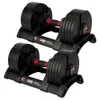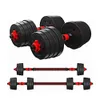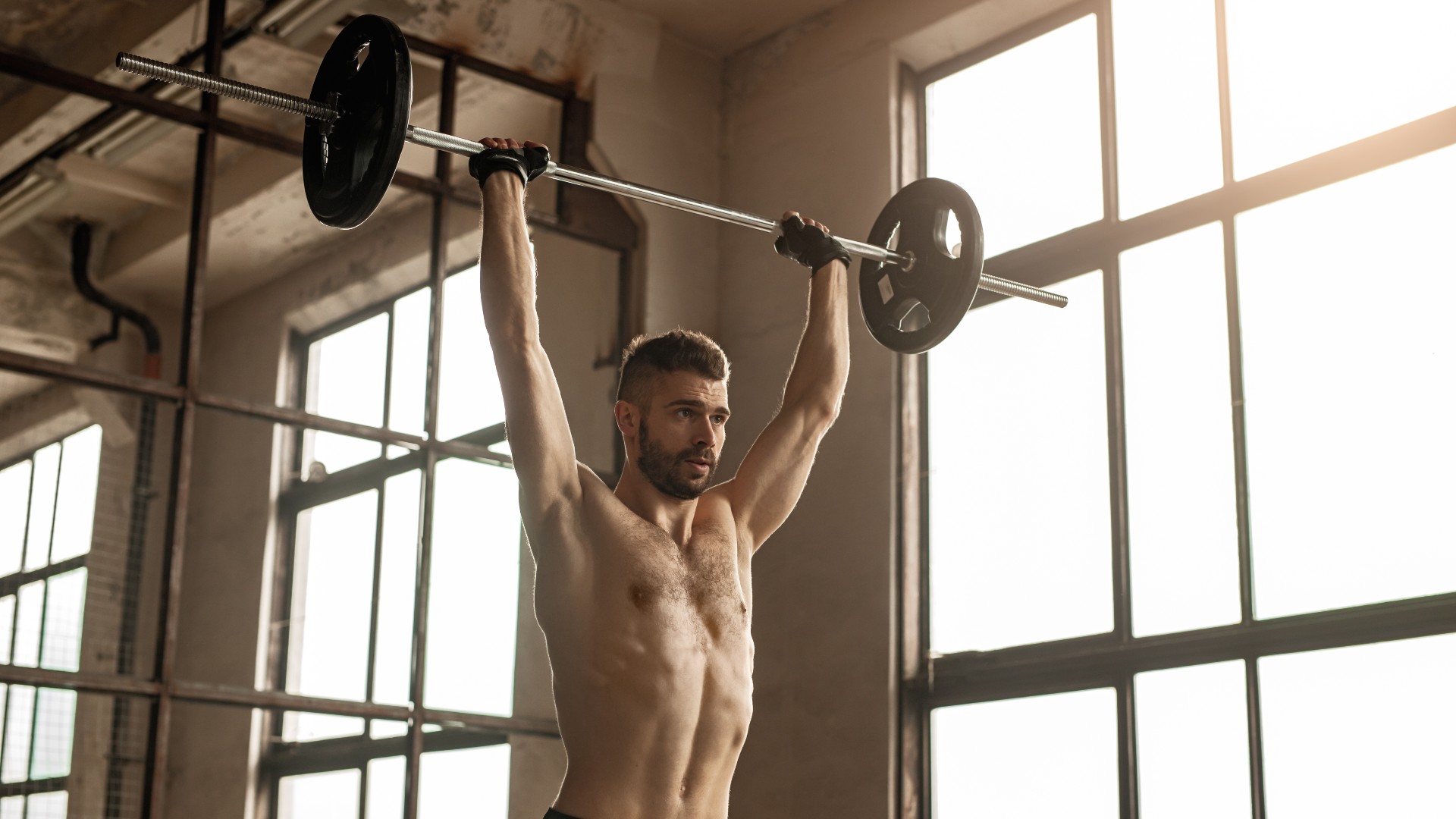
There are endless ways to pack on strength and muscle, but the “big five” compound lifts are considered the OGs of strength training, especially if you plan to test your one-rep max and build upon it.
A compound lift, or compound exercise, is multi-joint and multi-muscle, and these five are the holy grail, topping the group for traditional best weightlifting exercises to form part of your resistance training program. These are the bench press, squat, shoulder press, pull-up and deadlift.
Below, we cover the five exercises in more detail, including how to do them, muscles worked, and how best to program them.
What are the 'big 5' lifts of strength training?
Together, the “big five” build strength and muscle across all the major muscle groups and recruit the synergist muscles (assisting muscles that support the “primary movers”) too, which we’ll cover below.
You don’t have to include all five exercises in one strength program; you could split the exercises or group some together across the week according to upper and lower body. Many weightlifters also use isolation exercises alongside these moves to hone in on specific, smaller muscle groups after training the larger, more powerful muscles. For example, you might pair the biceps curl (isolation exercise) with pull-ups (compound).
Best of all, you can use barbells, the best adjustable dumbbells, kettlebells, or resistance bands to perform them, meaning these are also the best strength exercises for beginners. If you’re new to weightlifting, these five exercises are the bread and butter, so you might consider starting with them as the most efficient way to build full-body strength and muscle and train and recruit the most muscle groups.
1. Bench press
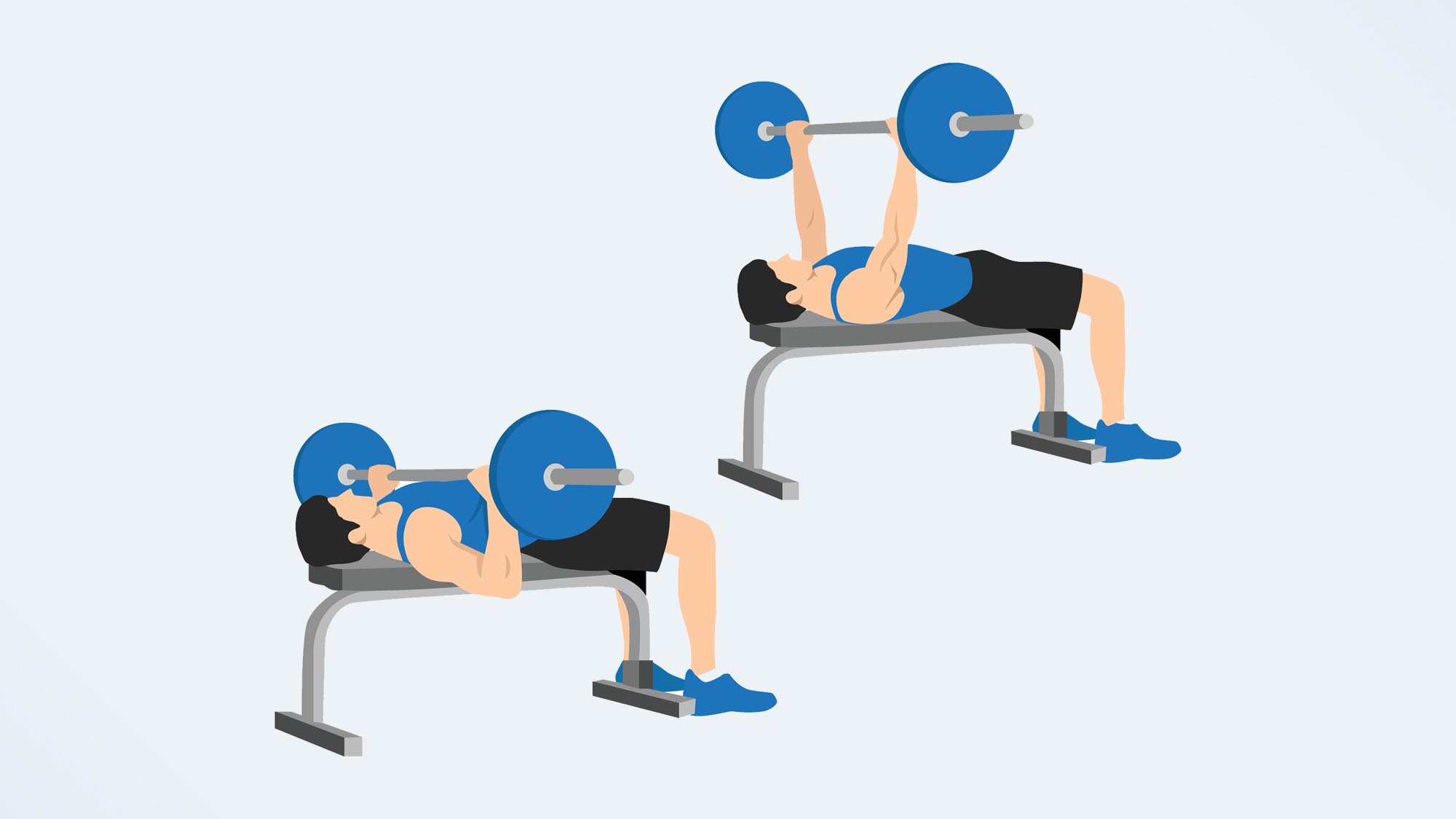
Flip the push-up round and add weights — hello, bench press. The exercise builds and strengthens the chest — namely, the pectoralis major muscles that help shape the chest, with help from the anterior deltoids (fronts of the shoulders) and triceps. The core muscles also work hard to stabilize the trunk throughout.
Sign up to get the BEST of Tom's Guide direct to your inbox.
Get instant access to breaking news, the hottest reviews, great deals and helpful tips.
It’s a vital strength exercise for sculpting and strengthening the upper body muscles, so we recommend learning how to bench press with proper form before executing it in the gym. And if you’re interested in finding out some of the finer benefits of the bench press, our writer did dumbbell chest presses every day (the dumbbell variation of the same move) and reported the process.
Trainer tips: If you’re starting the exercise for the first time, go light and use a spotter or mirror. The weights should track over your chest, not your face, and you’ll need to execute the full range of motion, which means your elbows extend fully as you raise the weights upward.
2. Deadlift
There are so many deadlift variations that it’s hard to get bored or run out of programming ideas. For many people, the deadlift is the best compound exercise for strengthening the entire body from head to toe, and it’s a one-stop shop for full-body engagement.
The conventional deadlift primarily targets the posterior chain — the back, glutes and hamstrings — your hip flexors, core, arms, shoulders and quads, and it tops the list of functional training exercises, too. There’s barely a muscle group that goes untouched, and you’ll develop serious core and grip strength over time.
Trainer tips: Head to our how-to deadlift page for a full breakdown of the conventional deadlift, and the Romanian deadlift is worth getting to know if you’d like to work your hamstrings harder. Barbells will help you pack on the most weight, but dumbbells are useful for unilateral exercise and accessibility.
3. Squat
Whether you prefer the front squat to load your quads, the back squat to load tension into your glutes and hamstrings, or an entirely different squat variation, we love this lower body exercise in all its forms. Squats are one of the best leg exercises for building your glutes, quads, hamstrings and calves while activating your hips and core muscles.
Although there are steps to follow when learning how to squat, every lifter’s biomechanics are different, and the amount of mobility you have in your spine, hips, knees and ankles will ultimately determine how a squat feels and looks to you.
Trainer tips: We recommend learning how to squat first and how you might be doing squats wrong, plus fixing them if you are. If you have limited mobility in your hips, knees, or ankles, your lower back might compensate to help you achieve a deeper squat position, known as the butt wink. Here are 7 ways to fix "butt winks" if this looks familiar.
Pull-up
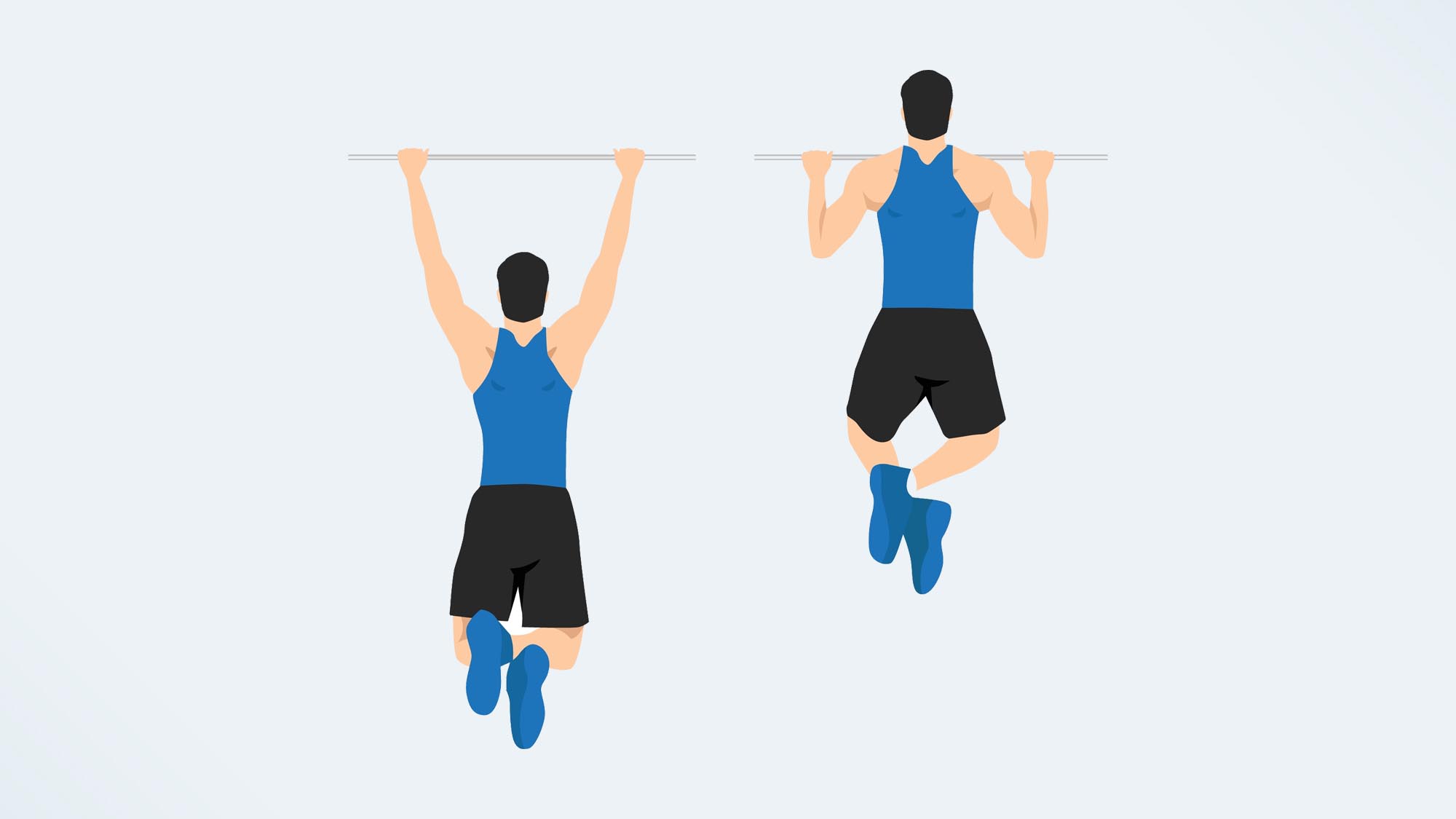
Back day isn’t complete without pull-ups. Pulling your own body weight upward makes this one of the most functional lifts on the menu. When deciding between pull-ups vs chin-ups, the grip is the crucial factor — chin-ups use an underhand grip, meaning your palms face toward you, and recruit more of the pecs and biceps. Pull-ups are performed overhand, with palms facing away, emphasizing the posterior chain (back of the body) like the trapezius.
Research published in the Sciences of Sport explains that both strengthen your lats, shoulders, biceps, posterior deltoids, teres major and deep stabilizer muscles like the core.
Beginners can still access pull-ups by wrapping a resistance band around the bar and stepping the knees or one foot through for extra support. You could also practice jumping up to the bar, then lowering yourself down with control as a starting point. The method is called an eccentric pull-up and helps build strength and stability as you lower your body weight.
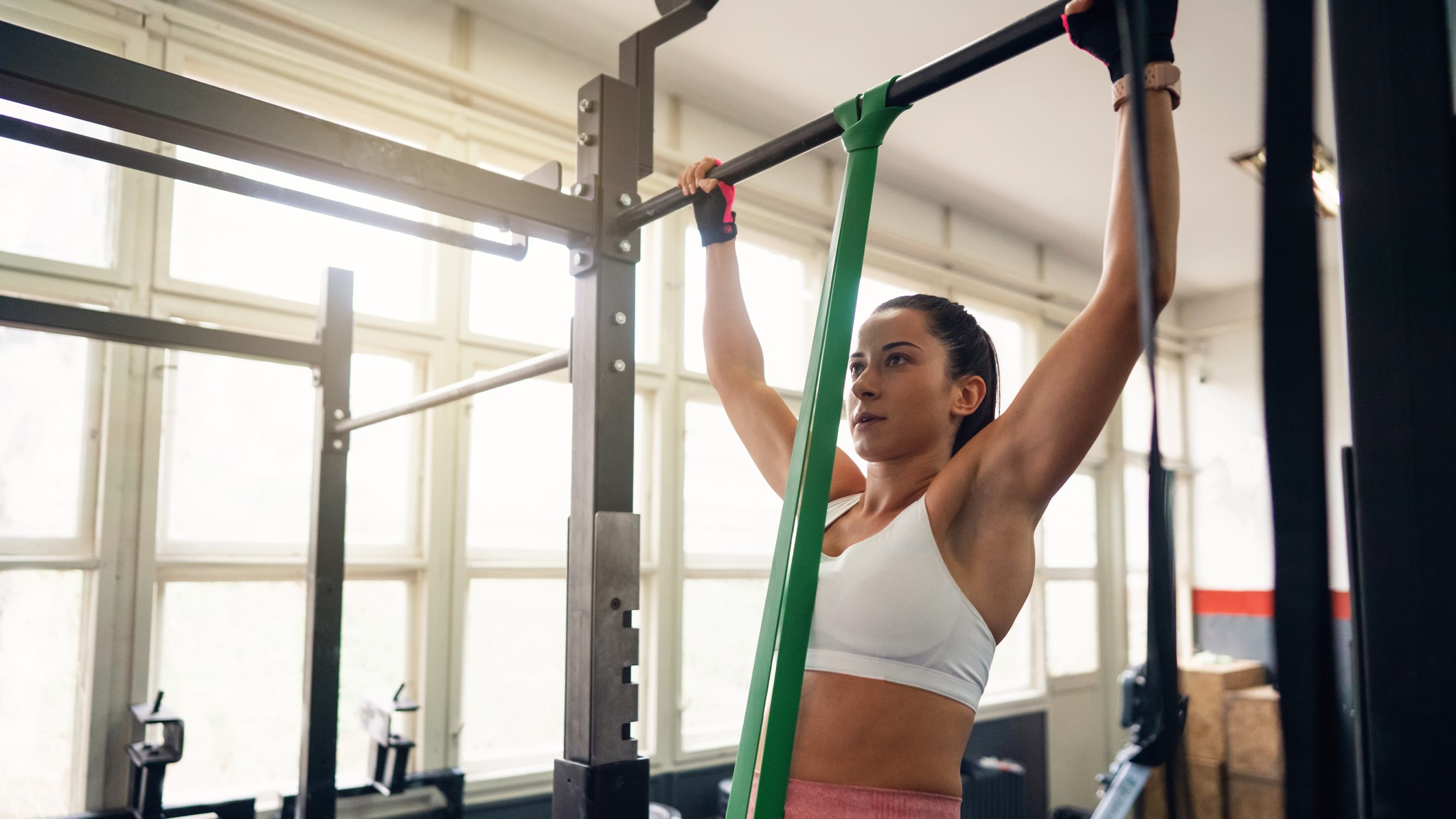
Trainer tips: If you’ve been doing pull-ups wrong, here’s how to fix them. For those who don’t yet have pull-ups banked, we swear by these 5 full-body strength exercises for beginners using one pull-up bar to help you build the necessary foundational strength and target the same muscle groups.
5. Shoulder press
Also known as the overhead press, the move targets the upper pectoral muscles in your chest, anterior deltoids and triceps and strengthens your upper traps. The barbell press helps develop maximal strength output and explosive power, especially when lifting heavy. For those with rotator cuff injuries, check with a personal trainer before trying the exercise.
Trainer tips: Swap a barbell with dumbbells, kettlebells, or a resistance band if you don’t feel comfortable lifting a bar yet. We cover how to do the overhead press in more detail here, including variations and scaling options you can try.
The seated shoulder press is another option worth practicing to help build foundational upper strength before progressing to the standing press, which requires more back and core stability. Sit with your chest or back resting against a bench set on an incline for additional support.
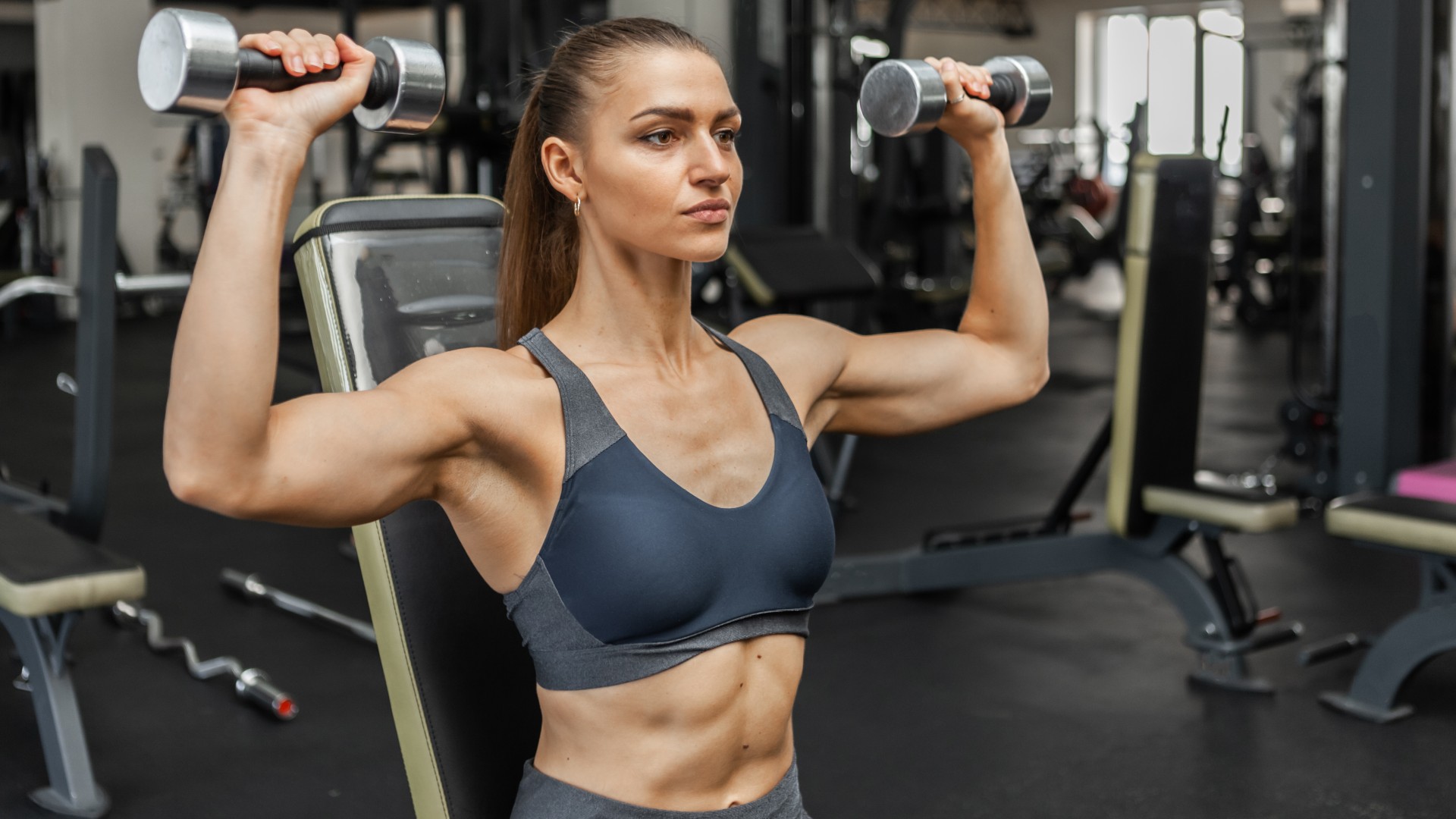
Bottom line
The big five compound lifts are efficient and effective, giving you more bang for your buck during workouts. The more muscle groups you recruit during exercise, the more energy is demanded to fuel the muscles during movement. The more lean muscle mass you develop, the more metabolically active that muscle is — meaning it requires more energy to maintain, boosting the metabolism while building stronger muscles.
Weightlifting also trains intermuscular and intramuscular coordination, which refers to how muscle fibers “work together” within a muscle and how different muscles also work with each other. Strong muscular coordination is crucial for keeping the body robust and improving athletic performance.
How to program the 'big 5' lifts
If your goal is to build muscle, strength, or both, reading up on hypertrophy vs strength training will help you decide how to program sets, reps, rest and frequency.
As a general rule of thumb, strength building adopts more sets (3-5) and fewer reps (2-6), whereas hypertrophy (the muscle-building process) typically dials into higher reps (8-12), fewer sets (3-4) and less rest. Another popular way of deploying the big five is the 5x5 workout — five sets and five reps of each of the five exercises several times a week to give your body time to rest up. Every few weeks, incrementally add weight as your strength increases.
More from Tom's Guide
- High reps vs heavy weights
- Forget sit-ups — you only need 1 kettlebell and 3 seated ab exercises to sculpt your core
- Forget burpees — build muscle all over with one kettlebell and these four moves

Sam Hopes is a level 3 qualified trainer, level 2 reiki practitioner and senior fitness writer at Tom's Guide. She is also currently undertaking her Yoga For Athletes training course. Sam has written for various fitness brands and websites over the years and has experience across brands at Future such as Live Science, Fit&Well, Coach, and T3.
Having worked with fitness studios like F45 and Virgin Active, Sam now primarily teaches outdoor bootcamps, bodyweight, calisthenics and kettlebells. She also coaches mobility and stretching-focused classes several times a week and believes that true strength comes from a holistic approach to training your body.
Sam has completed two mixed doubles Hyrox competitions in London and the Netherlands and finished her first doubles attempt in 1:11.
